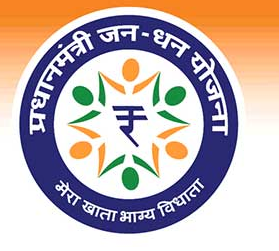Jan Dhan Yojana and targeted subsidies
The objective of the Pradhan Mantri Jan Dhan Yojana (PMJDY) is to ensure access to financial services viz. Banking, Savings & Deposit Accounts, Remittance, Credit, Insurance, Pension in an affordable manner.
Under this scheme, an account can be opened in any bank branch or Business Correspondent (Bank Mitra) outlet. PMJDY accounts are being opened with Zero balance. The scheme has also entered into Guinness book of world records to get 12.7 crore bank accounts opened in the last 6-8 months.
Key Features of the Scheme
The schemes would provide the connectivity to the individuals through banking facilities. Several key features of the scheme include:
- Interest on deposit
- Accidental insurance cover of Rupee One Lakh.
- No minimum balance required
- Life insurance cover of Rs.30,000/-
- Easy Transfer of money across India
Further, the beneficiaries of Government Schemes would get Direct Benefit Transfer in these accounts; After satisfactory operation of the account for 6 months, an overdraft facility will be permitted; Access to Pension, insurance products.; Accidental Insurance Cover, RuPay Debit Card must be used at least once in 45 days; Overdraft facility upto Rs.5000/- is available in only one account per household, preferably lady of the household.
Benefits to the government?
The government would be able to streamline its funding by better by targeting the beneficiary. Schemes such as direct benefit transfers (DBT) could be channelized. For example, funds could be directly transferred into the accounts of the beneficiaries under the programmes such as PAHAL, that aims to provide benefit of subsidized LPG cylinders. Similarly, beneficiaries could be targetted for scholarships, pensions, MGNREGA wages, food subsidies and other such welfare programmes. It would help to curb leakages in the system.
The reduction in subsidy bill would discipline the fiscal deficit and the surplus could be better utilized in the other welfare public programmes. Also the more the financial inclusion would be more the people taking benefit of banking facility.
It would increase the Savings rate and also provide alternative platforms to the people against the unorganized credit options. It would help increase in demand in the economy and thus more consumerism, more investment and thus more employment.
Challenges to Jan Dhan Scheme
Governments in the past had also made various efforts towards financial inclusion like banking correspondents, bank saathi, opening of branches to the rural fringes. All of them attains partial success. Even with Jan Dhan Yojana the challenge is not only to quantify the connectivity but also the continuity in the transaction.
The Reserve Bank warned the banks to be more careful while opening accounts under the Jan-Dhan Yojana, saying that a single individual could open multiple accounts in the lure of Rs 1 lakh insurance cover. The banks should have a single information sharing system by which this possible misuse could be stopped.
In this case, hawala operators would split the whole amount into several small units beyond the threshold using several bank accounts and send money overseas. The last was ‘money mules’ by which an individual would operate through another person’s bank account. In the north-eastern region, the SLBCs and the SLCCs should take steps to improve the credit-deposit ratio of the region as the CD ratio was much lower than the national average.
The scheme can be a “waste” if it leads to duplication of accounts, if no transaction happens on the new accounts and if the new users get bad experiences.


